Ever wondered why Japanese eat raw fish like fresh sushi and sashimi? We all know when it comes to preparing food, every cuisine around the world has its own traditions and methods on how to prepare fish and other meat.
In Japan, however, eating raw fish has been an important part of Japanese culture for centuries.
Why Japanese eat raw fish?
As a Japanese, I have eaten raw fish dishes like fresh sushi, sashimi and other such raw fish. Most of my non-Japanese friends are obviously deterred by the idea, of course, as they think it might be unhealthy. But that’s not true. There are three main reasons why Japanese raw fish:
Japanese eat raw fish because it has several health benefits. Fish is rich in omega-3 fatty acids which makes it extremely healthy. But when cooked, most of these healthy omega-3 fatty acids are lost. Another reason why Japanese eat raw fish is because it’s an island nation and has a strong history of ocean and freshwater fishing. And the third reason is because of its Buddhist roots discourage its followers from eating other meat due to which fish became the alternate source of dietary protein.
So you can see why eating raw fish became so popular in Japan. It’s available in plenty, is packed with nutrition, and is ingrained in the Buddhist culture.
Related: Love authentic Japanese food? Try out these 7-eleven foods in Japan to taste the yummiest local food!
As a Japanese, I love sushi, Sashimi, Narezushi, Temaki, and so many more. These are all eaten raw and I absolutely love the delicate texture and complex flavor that these dishes have.
When prepared right, these dishes are an absolute delight! Here are some Japanese cookbooks you should check out if you're interested in learning more about Japanese cuisine!
With its strong Buddhist roots, meat was somewhat of a taboo in Japan, historically speaking. And since Japan is an island nation, fish soon became alternative meat filled with protein.
But there’s more to why Japanese eat raw fish than just their Buddhist roots. Eating raw fish is considered healthy eating in Japan as raw fish also has many health benefits that are preserved in its flesh and oils.
Let’s explore why Japanese eat raw fish!
Related: Ever wondered why Japanese melons are so expensive? Find out here!
Why Japanese Eat Raw Fish
History Behind Why Japanese Eat Raw Fish
The traditional Japanese cuisine - Washoku is the name of the cuisine that concentrates on raw fish. And in fact, in December 2013, Washoku made the list of Intangible Cultural Heritage by UNESCO.
So you can see Washoku cuisine is seen as an important part of the Japanese culture as it was established some 4000-5000 years ago, around the Jomon period.
Since the Jomon period, fish caught in the local coastal waters of Japan are sold in the fish markets where people come to buy fresh fish.
The chefs or cooks in Japan serve this fresh raw fish with different sides which helps them create different types of dishes.
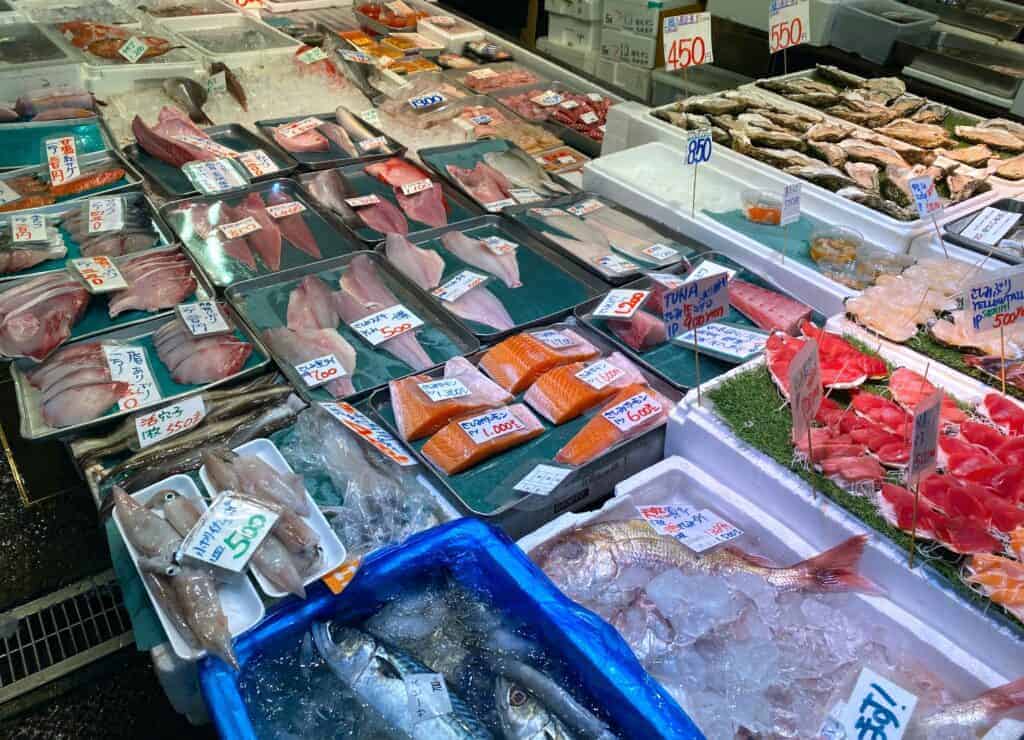
Related: Here's a guide to give you a crash course in Japanese home and kitchen. Check it out!
How did Japanese Start Eating Raw Fish?
The culture of eating raw fish in Japan can be dated back to the 7th century when Buddhism became part of the Japanese culture. Buddhism doesn’t believe in killing animals for consumption and because of this, by the 10th century, most Japanese people put a hard stop to eating meat.

Since Buddhism entered the culture, the Japanese slowly shifted to Pescetarianism aka pesco-vegetarianism where they eat seafood but not pork, red meats, and poultry. And obviously add a lot of veggies as accompaniments in the dish.
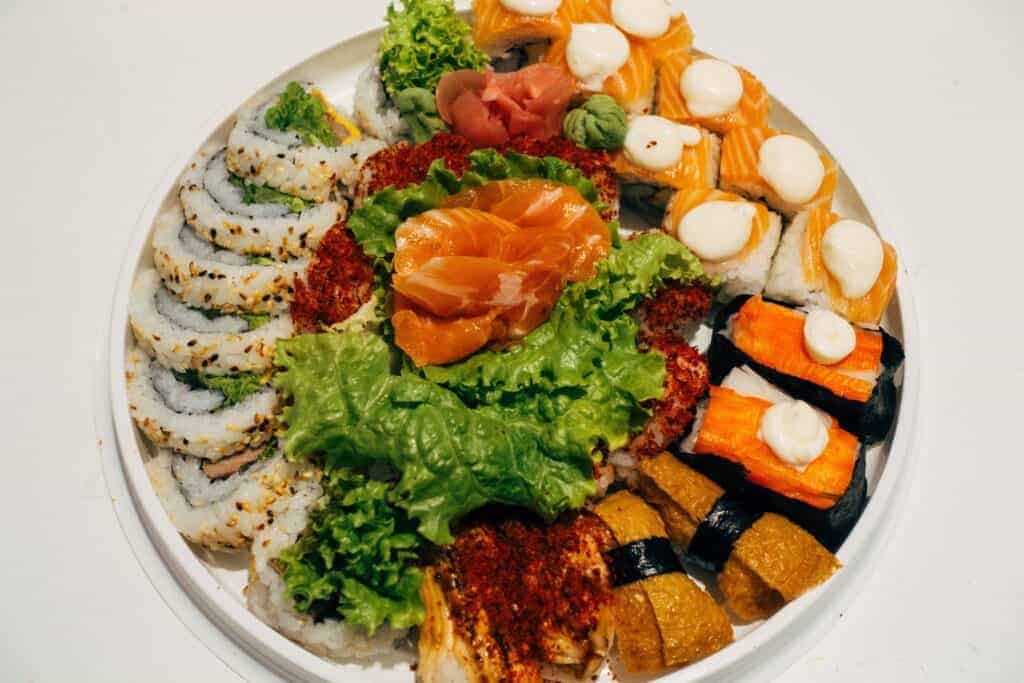
Avoiding meat other than fish or other seafood was prevalent in Japan even before Buddhism entered the country. Shintoism, Japan’s native religion, also has the same belief.
Related: Fruits in Japan can be sold for a fortune! Find out why Japanese fruits are so expensive here!
And people who followed Shintoism naturally preferred fish over any other meat. So this concept was embraced with open arms in Japan.
Culturally speaking, this is why Japanese eat raw fish.

During the Edo period, the consumption of fresh fish caught from the oceans became popular. And over the years, as the cuisine became more popular, the need to make it more flavorful and presentable became important as well.
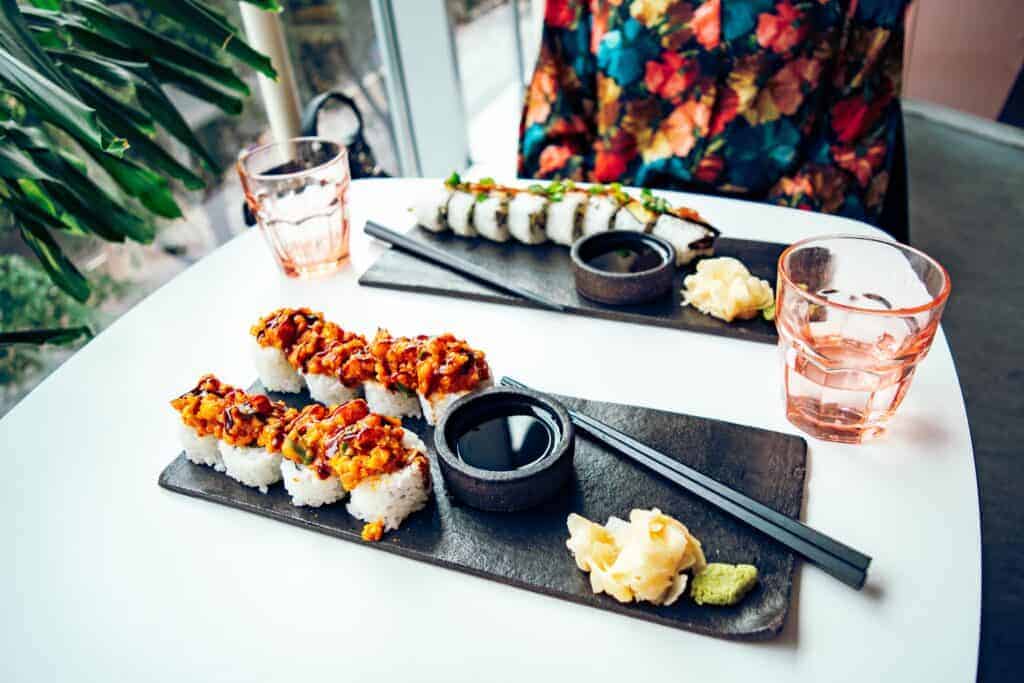
Today, however, chicken, pork, or any other meat isn’t looked down upon in Japan. Pretty any restaurant will serve meat other than fish as well. Japanese karaage (fried chicken), in fact, is very popular amongst the locals as well as the tourists.
Having said that, eating raw fish like sushi and sashimi in Japan is still an important part of the culture and the Japanese diet.
Related: Try sushi sandwiches or karaage from these awesome Japanese convenience stores and you’ll forget those fancy restaurants!
Safety of Raw Foods in Japan
As Japan in an island nation, fresh fish is always available. And raw fish dishes like sushi and sashimi can only be eaten when it's fresh.
To further kill the bacteria, sushi and sashimi is paired with soy sauce and wasabi that act as bactericidal and kill any remaining bacteria.
This further protects them from food poisoning too!
Related: Here's a natural way to lower blood sugar. By eating Goya superfood. Read all about it here!
Health Benefits of Eating Raw Fish
What are the health benefits of eating raw fish?
There’s a lot of misconception about eating raw fish. In fact, many of my non-Japanese friends think that it’s unhealthy. But that’s not entirely true. Eating raw fish has lots of health benefits which is also why the Japanese eat raw fish. Here are the three main health benefits of eating raw fish:
- Raw fish is packed with proteins. It is also low in saturated fats and carbs.
- Raw fish has an abundance of PUFA, polyunsaturated fatty acids, aka omega-3 fatty acids. Omega-3 fatty acids are known to boost the functioning of the brain, development of the body and also improve heart conditions.
- When you compare raw fish with cooked fish, raw fish doesn't have heterocyclic amines (HCA) which are known to cause cancer. Heterocyclic amines are developed in fish or other meats when it is exposed to high temperatures like frying it on a pan or grilling it.
Related: Every wondered why Japanese does watermelon better than anyone else in the world? Read to find out!
Japanese Eat Raw Fish Because It’s In Abundance
Japan has many rivers and lakes that are accessible and several harbors and seaports for fishing. Being an island nation, it’s obvious that the Japanese would prefer fresh fish over any other meat.
Basically, Japan's geographical location and its closeness to the sea is also why Japanese eat raw fish.
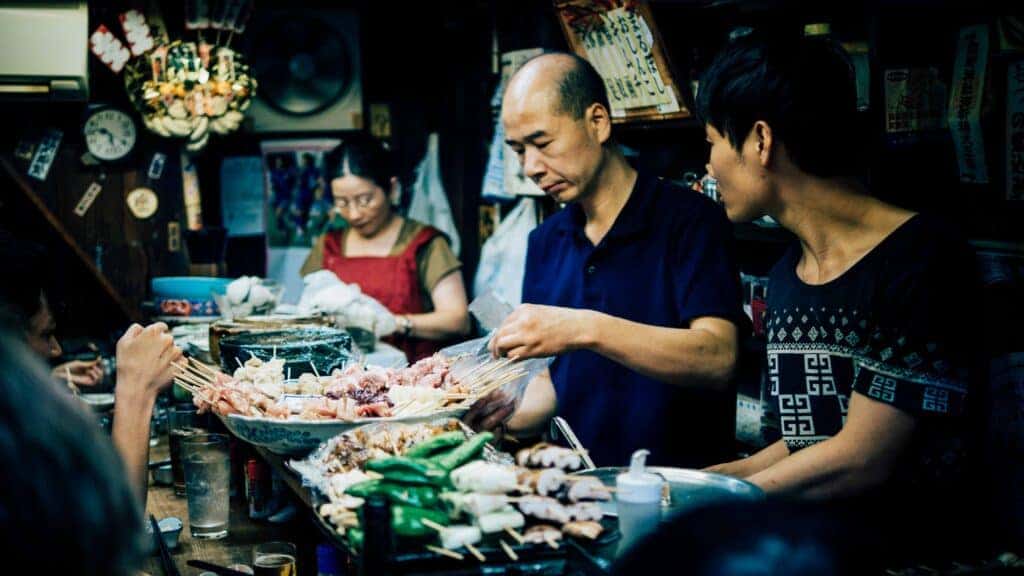
Japanese usually prefer to consume either freshwater or saltwater fish that is in season to avoid stocking of fish. As soon as the fish is caught it’s flash-frozen either in the next couple of hours or in the boat itself.
Flash freezing is a process that keeps the fish free from parasites that may be harmful upon consumption.
Related: Read all about this highly nutritious and lip-smacking fruit called Kaki: Japanese Persimmon.
What is Washoku Cuisine Of Raw Fish
A dish prepared in the traditional style of Washoku has seven primary ingredients: Rice, greens, marine plants, root crops, soybeans or pulse crops, veggies, and fruits.
And for animal protein there’s fish. Washoku cuisine offers a complete, well-balanced meal because it has a mix of all the nutrients that are required to maintain a healthy diet.
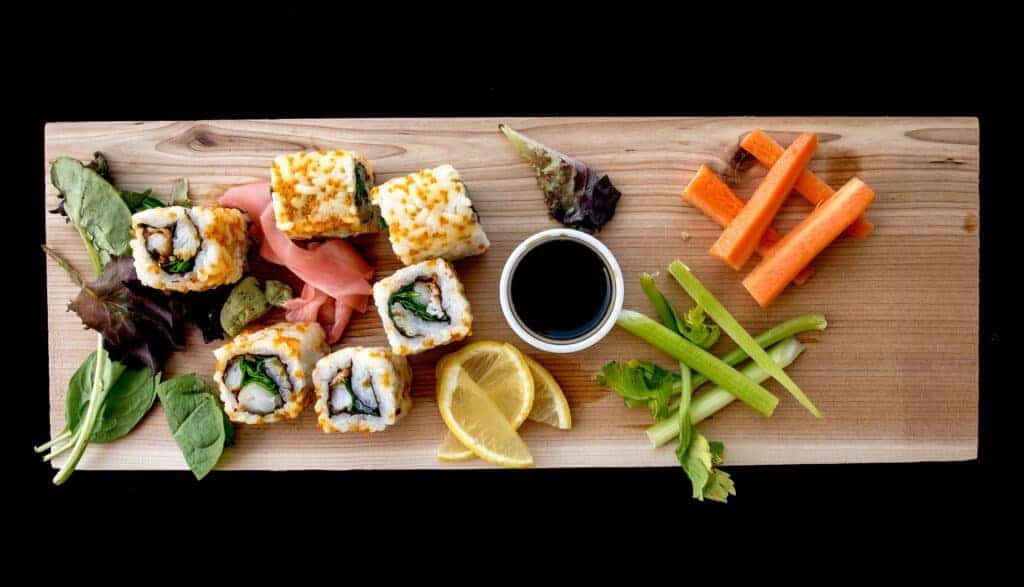
This is why the rate of heart disease and related conditions is low in Japan. In fact, the Japanese diet is considered one of the healthiest diets in the world.
The combination of Umami and Raw Fish
The fundamental flavors of Japanese cuisine are salt, savory, sweet, bitter, and sour. And Umami refers to the savory flavor. This Umami flavor is achieved by combining glutamic acid from soy sauce and inosinic acid from fish.
Types Japanese Raw Fish Dishes
- Sushi
Sushi can be traced back thousands of years ago during the Muromachi period (1336 - 1573). During this time, people used fermented rice to cover raw fish in order to preserve it.
Now the dish has developed into a complex art with several side dishes, giving you a delectable presentation! Sushi has vinegared rice stuffed with small bites of fish, accompanied by seaweed and veggies.
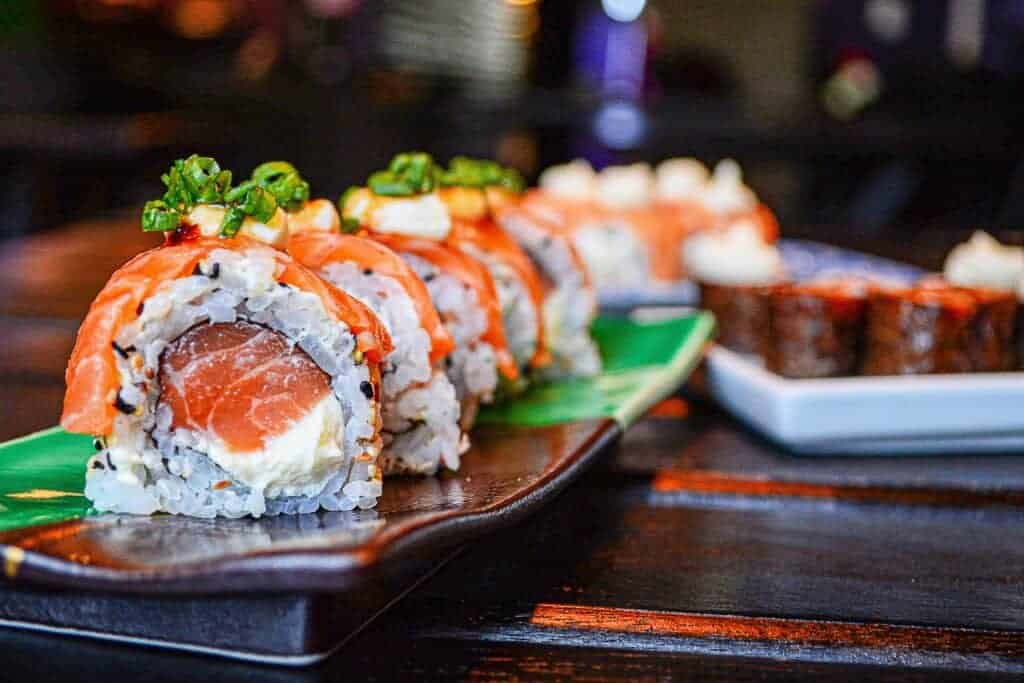
Before refrigeration came into the picture, people would use vinegar or soy sauce to cure the ingredients of sushi including fish, or sometimes even cook it. Sushi is a dish that is popular all over the world today and no tourist that comes to Japan will leave without at least trying it.
- Sashimi

To prepare Sashimi, other than fresh fish, other seafood like sea urchins, shellfish, squid, and octopus is also used. Sashimi consists of raw fish like salmon, tuna, and flounder cut in bite-sized slices and served with wasabi and soy sauce. It also accompanied with shellfish, squid and shrimp.
- Narezushi
Japan saw this all the way back in the 10th century. People used rice and salt to preserve raw fish - this process was called pickling. In the olden days, the rice was thrown away before eating the pickled fish but today it is served with rice.
Why Japanese Eat Raw Fish: FAQs
Is raw fish in Japan safe to eat?
It’s safe to eat raw fish in Japan because it’s saltwater fish and the fish go through several top-quality cleaning protocols to ensure the fish is up to good standards.
Why is it OK to eat raw fish?
Fish has multiple health benefits when eaten raw. Raw fish consists of higher levels of vital nutrients like Omega 3 and it’s also free from any chemical components.
Why do the Japanese not cook fish?
Japanese don’t cook their fish because cooking can cause the healthy nutrients to drain out and most Japanese prefer the taste and texture of raw fish rather than cooked fish.
Why does Japan eat so much fish?
The Japanese eat so much fish because Japan is an island and they have a great variety of fish available. Since Japan is known to have a Buddhist culture they don’t believe in killing animals for food and hence rely on fish as their primary source of animal protein.
When did the Japanese start eating raw fish?
Eating raw fish became a part of the Japanese culture dating back to the 10th century when Buddhism was widespread in Japan and people believed killing animals for consumption was taboo. Japanese chefs at that time came up with new ideas to prepare raw fish dishes and improved their taste and presentation over time.
Why is sushi fish raw?
Sushi fish is raw because the Japanese love eating raw fish that was fermented in rice wine, sake, or vinegar which gives sushi a great taste and texture.
Is sushi really raw?
Sushi is not considered as a raw food entirely because only the fish is raw and it’s wrapped with cooked vinegar rice and other ingredients like seaweed and tomatoes etc.
Is sushi healthy to eat?
Sushi can be healthy if eaten in the right amounts. The raw fish in sushi has vital nutrients like Omega 3. However, sushis are known to contain a very high rate of calories, and also the raw fish in sushi might cause food poisoning.
How do Japanese avoid parasites in raw fish?
There are a few ways that the Japanese avoid parasites in raw fish.
- Freezing: The most common way to kill parasites in raw fish is to freeze it. The FDA recommends freezing fish at -20 degrees Fahrenheit for at least 7 days, or -31 degrees Fahrenheit for at least 15 hours. This will kill any parasites that may be present in the fish.
- Salting: Salting is another traditional method of killing parasites in fish. The fish is soaked in a salt brine for several hours, which draws out the moisture and kills the parasites.
- Vinegar: Vinegar is also effective at killing parasites. The fish is rinsed with vinegar before it is served, which kills any parasites that may be present.
- Careful selection: The Japanese also carefully select the fish that they use for sushi and sashimi. They only use fish that are known to be low in parasites, such as salmon, tuna, and mackerel.
As a result of these methods, the risk of getting sick from parasites in raw fish in Japan is very low. In fact, it is estimated that only about 1 in 100,000 people who eat raw fish in Japan will get sick from parasites.
Also Read:




